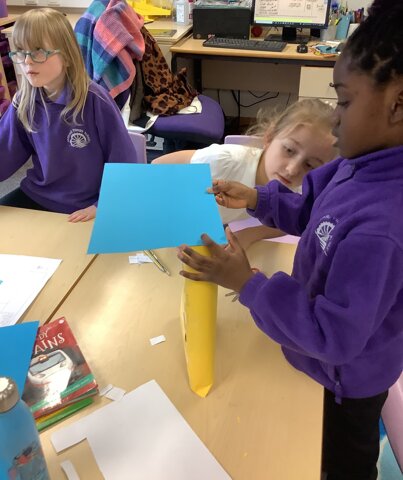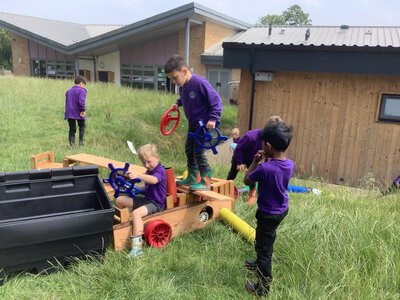Design and Technology Curriculum Overview
DT intent
- At Millbrook, where possible, we teach Design Technology through a topic-based approach.
- We follow the National Curriculum which lays out the knowledge and creativity that children develop through their journey at Millbrook.
- The knowledge covered in each year group builds on what they covered in the previous year.
- At Millbrook we aim to provide the children opportunities to use their creativity and imagination to design and make products that solve real and relevant problems.
- The children follow a research, design, make and evaluate process during a sequence of DT lessons. They learn to take risks, be innovative and evaluate the models they create. Children are also taught how to cook and understand the principles of healthy eating.
- By the time they leave Y6 they should begin to understand the principles of a healthy diet, prepare, and cook a variety of dishes and understand how ingredients are grown, caught and processed.
- Through a variety of practical activities, they will have gained the knowledge, skills and understanding needed to design and create working models.
- A Design Technology topic is taught 3 times a year. It is then taught weekly or as a complete day of learning.
- Each DT unit has the focus of either Construction, Textiles or Cooking.
- DT is taught in carefully, topic-focused blocks throughout the year to enable in-depth, quality learning to take place. If more appropriate, an area may be taught discretely.
- At the start of each lesson, teachers provide children opportunities to recap previous learning in order to build upon the skills already learnt.
- WOW starters and fantastic finishers are used to engage and excite children and to enhance the curriculum in DT.
- Children evaluate their creations at the end of a unit to review their successes and think about what they could do better next time.
- In Foundation Stage, children have access to DT during continuous and enhanced provision throughout the year. They can use the resources to create anything and are encouraged to talk through not only the final product but also the process of creation. Some learning themes in foundation stage, link well with DT and in these weeks, children are explicitly taught different skills which they can use in the provision: to safely use and explore a variety of materials e.g. paper, tools e.g. scissors and techniques e.g. junk modelling
- Throughout Key Stage 1 and Key Stage 2, we evidence our learning through written work and photographs in topic books. Also, all classes have DT displayed throughout the classroom as well as showing evidence around the school.
- We use a progression of knowledge and skills document which enables teachers to plan to meet the range of abilities throughout their year groups and ensures that the curriculum is skills focused. These levelled skills ensure that all abilities are catered for – extended and supported as appropriate.
- At the end of each block of teaching, children produce a physical piece of DT work. This could be a model or something they have cooked.
- Children are given feedback both during and at the end of a lesson, to enable them to continue developing their skills and understanding of how to use different DT skills and techniques. Occasionally, at the end of a lesson teachers will hold a ‘Walking Gallery’ to showcase the children’s work and provide opportunities to appreciate and evaluate their own and their peers’ work.
- Children enjoy DT.
- They are actively engaged during lessons, eager to apply their knowledge and skills to each creation.
- By the time children leave Millbrook, they will have the confidence to be creative and innovative. They will have taken risks and built up the resilience to make mistakes.
- They will think of themselves as designers and can be critical about their own and others’ work.
Design Technology learning









.jpg)